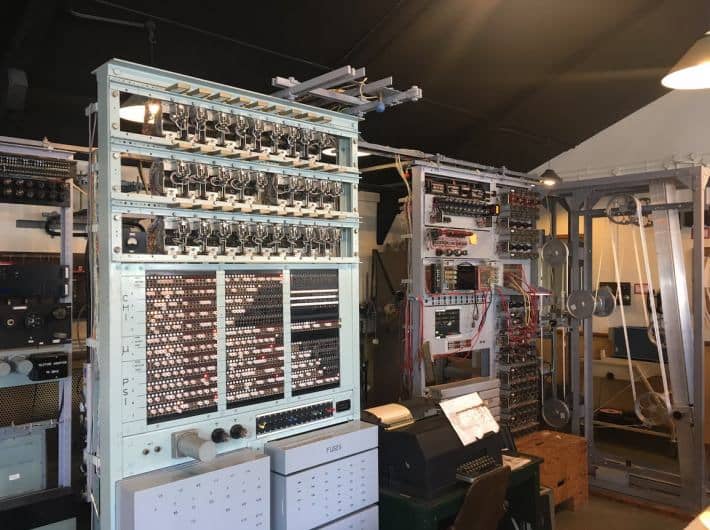There are a lot of talks these days about optical computing and its potential to revolutionize the tech industry. But what is it, exactly? In this blog post, we will explore the basics of optical computing and discuss how it works. Stay tuned, because by the end of this post you’ll understand why everyone is talking about optical computing and why it may be the future of technology!
1. What is optical computing?
Since the beginning of the computer era, optical computing has been on the horizon. Optical computing utilizes light in place of electrical signals to transfer data and process information. It is a form of computing that converts light into an electrical signal for processing, instead of relying solely on traditional electronic components such as transistors or logic gates. Plus, the speed of light makes optical computing much faster and more efficient than traditional computing methods.
2. How does it work?
Optical computing works by taking advantage of the properties of light. Light is made up of particles called photons, which travel in waves and can be manipulated to store and transfer data. This manipulation is possible through a variety of technologies such as lasers, holograms, and optical fibers. Furthermore, optical components such as mirrors and lenses are used to focus, redirect and control light in order to process the data.
The most important aspect of optical computing is its speed. Because light travels much faster than electricity, optical computing can process information more quickly than traditional electronic computing methods. This makes it ideal for tasks such as high-speed calculations and complex simulations that require rapid processing speeds.
3. Benefits and applications of optical computing
Optical computing has several distinct advantages over traditional electronic computing methods. It is more energy efficient, as it consumes less power than conventional computers. Additionally, it can be used to create highly parallel processing systems that are capable of performing multiple tasks simultaneously. This makes it ideal for data-intensive operations such as deep learning and artificial intelligence.
In terms of applications, optical computing can be used in a variety of fields including imaging, robotics, automation, and high-performance computing. It is also being explored for use in healthcare, where it could be utilized to enable real-time diagnosis. Additionally, optical computing has potential applications in aerospace engineering, where it could be used to create lighter and more efficient aircraft.
4. How does the use of light waves improve data processing speeds and efficiency over traditional methods like electricity or microwaves?
As the speed of light is significantly faster than electricity, using light waves to transfer data and information can drastically improve the overall speed and efficiency of data processing. For instance, instead of waiting for electrons to travel through a wire or for microwaves to bounce off objects, optical computing uses light waves to send signals from one point to another in an instant. This not only reduces the amount of time needed to process data, but it can also reduce the amount of electricity used. Additionally, optical computing is much more reliable than traditional methods because light waves do not get affected by interference or degradation like microwaves and electric signals.
Optical computing also has a number of advantages over other forms of computing. For one, it is much more energy efficient since light waves can travel long distances without losing power. Additionally, optical computing systems are typically less complex and require fewer components than other forms of computing, making them easier to build and maintain. Finally, because optical computing systems use light instead of electricity or microwaves, they do not generate heat like traditional computers which can reduce the amount of energy needed to power them.
5. What are some potential applications for optical computing in the future, and how could it change the way we live and work?
When it comes to potential applications for optical computing, the possibilities are almost limitless. In the future, optical computing could be used in areas such as medicine and healthcare, autonomous vehicles, robotics and Artificial Intelligence (AI), augmented reality (AR), and virtual reality (VR). It could also potentially be used to create powerful computers that consume less power and generate fewer greenhouse gases.
On a more practical level, optical computing could be used to increase the speed and accuracy of data transfer, allowing for faster calculations. This could have an enormous impact on areas such as communication technology or the Internet of Things (IoT). For example, photonics technology could be used to increase the security of data transmissions and ensure that data is not lost or corrupted. Not to mention, it could also be used to reduce latency and improve the speed of wireless networks such as 5G.
Optical computing could also help us to develop more powerful computers, with greater flexibility and higher processing speeds than we have ever seen before. This could open the door for extraordinary advances in computing power and performance, enabling researchers to explore further complex problems such as climate change, genomics, and robotics.
6. Are there any drawbacks to using optical computing, and if so, what are they?
If optical computing is widely adopted, there are some potential drawbacks. The primary disadvantage is that optical components are still relatively expensive compared to traditional electronic technology. Additionally, as light speeds up the processing of data, it can also lead to a faster draining of energy resources in order to power the system. This could lead to higher operational costs for companies that choose to use optical computing. Finally, there is also the challenge of controlling and manipulating light particles, which requires precise engineering and specialized technology.

Will modern computers end up in the national museum alongside this when optical computing comes to the fore?
By taking the time to understand the fundamentals of optics, staying up-to-date with developments in the field, networking with experts, and gaining hands-on experience through courses or internships, anyone can become well-versed in optical computing and begin exploring its practical applications.
Optical computing is a rapidly growing field that has the potential to revolutionize the way we interact with technology. With the right background knowledge and practical experience, individuals can gain an in-depth understanding of optical computing and explore its applications further. Thanks for reading!


Leave A Response